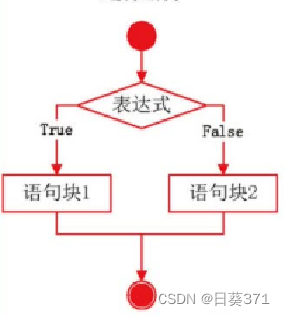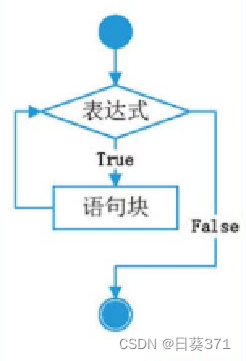本周对Python进行了基础的学习:
1.程序结构:顺序结构、选择结构和循环结构。



(1)if 语句: if 表达式:
语句块
例:
num = int(input('输入一个整数'))
if num%3==2 and num%5==3 and num%7==2:
print(num)(2)if...else 语句 :if 表达式:
语句块1
else:
语句块2
例:
num =int(input('输入一个整数:'))
if num%4==0 and num%100!=0 or num%400==0:
print("leap year")
else:
print("common year")(3)if...elif...else 语句: if 表达式1:
语句块1
elif 表达式2:
语句块2
elif 表达式3:
语句块3 ...
语句块n
例:
score = int(input('输入一个考试成绩:'))
if score>=0 and score<=59:
print("E")
elif score>=60 and score<=69:
print("D")
elif score>=70 and score<=79:
print("C")
elif score>=80 and score<=89:
print("B")
elif score>=90 and score<=100:
print("A")(4)if 语句的嵌套
if 表达式1:
if 表达式2:
语句块1
else:
语句块 2
例:
jiu = int(input('输入一个酒精含量:'))
if jiu<20:
print("不构成酒驾")
else:
if jiu>=20 and jiu<80:
print("酒驾")
else:
print("醉驾")例2:
word = str(input('输入一个单词:'))
if word == 'mo':
print('monday')
elif word == 'tu':
print('tuesday')
elif word == 'we':
print('wednesday')
elif word == 'th':
print('thurday')
elif word == 'fr':
print('friday')
elif word == 'sa':
print('saturday')
elif word == 'su':
print('sunday')
else:
print('error')(5)while循环:通过一个条件来控制是否要继续反复执行循环体中的语句。
while 条件表达式:
循环体
(6)for循环:一个依次重复执行的循环。
for 迭代变量 in 对象:
循环体
迭代变量用于保存读取出的值 对象为要遍历或迭代的对象 循环体为一组被重复执行的语句
(7)range()函数 Python内置函数,用于生成一系列连续的整数,多用于for循环语句中。 range(start,end,step)
例:实现1到100的累加
a = 0
for i in range(1,101):
a=a+i
print(a)a=0
i=1
while i <101:
a=a+i
i+=1
print(a)(8)for 循环嵌套
for 迭代变量1 in 对象1:
for 迭代变量2 in 对象2:
循环体2
循环体1
例:
#打印九九乘法表
for i in range(1,10):
for j in range(1,i+1):
print(str(j)+"x"+str(i)+"="+str(i*j)+"\t",end='')
print('')(9)在while循环中套用for循环
while 条件表达式:
迭代变量 in 对象:
循环体2
循环体1
(10)在for循环中套用while循环
for 迭代变量 in 对象:
while 条件表达式:
循环体2
循环体 1
(11)break 语句
while 条件表达式1:
执行代码
if 条件表达式2:
break
条件表达式2用于判断何时调用break语句跳出循环。
(12)continue 语句 :终止本次循环而提前进入下一次循环中。
while 条件表达式1:
执行代码
if 条件表达式2:
continue
(13)pass语句表示空语句。 不作任何事情,一般起到占位作用。
作业一:
#逢7拍手
total = 99
# import random
# a = random.randint(0,10)
# print("从这开始", a )
for num in range(1,100):
if num % 7 == 0 :
print(num)
continue
else:
str1 = str(num)
if str1.endswith('7'):
print(num)
continue
total-=1
print("total:" , total)作业二:
# 地铁
per_num = int(input('per_num:'))
sta_num = int(input('sta_num:'))
if 0<sta_num<=5:
money=per_num*3
print(money)
elif 6<=sta_num<=9:
money=per_num*8
print(money)
elif sta_num>=10:
money=per_num*9
print(money)
elif sta_num<=0 or per_num<=0:
print('error')





















 1315
1315











 被折叠的 条评论
为什么被折叠?
被折叠的 条评论
为什么被折叠?








